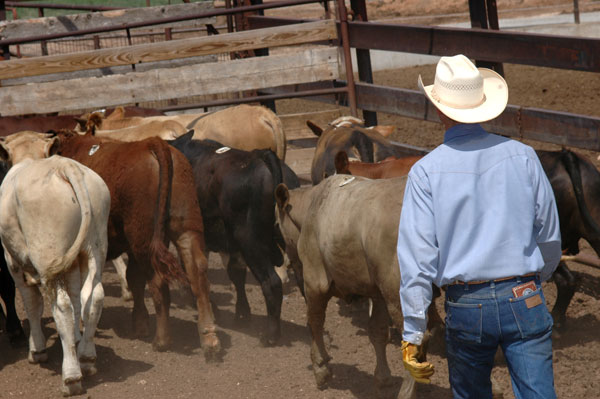The more you do now to prepare your calves for the next step in their journey, the better you calves will do.
October 3, 2018

By Katy Lippolis
For many of the nation’s spring-born calves, the good life is about to change. That is, if you define the good life as hanging out with Mama, getting all the milk you want and grazing on summer grass.
What happens next can also be the good life. That is, if your cattle handling and weaning management allows it.
The transition for calves through weaning and feedlot receiving is a difficult one. Prior to this point, calves often have been living an easy life with their dams who provide them with nutrition and comfort. Our goal should be to make the transition as easy as possible for them and prepare them for the next step in their lives.
Not only can we incorporate management strategies to maintain their growth and performance, but we can also work to decrease the stress and subsequent illness the calves experience. Whether finishing the calves we raise or selling them at weaning, there are many steps that we can take to win the battle on this transition.
When preparing calves for the feedlot, we need to understand the challenges they will encounter once they are there. Calves will often experience weaning stress, transportation, commingling, a new hierarchy structure, and introduction to a new environment and feedstuffs in a relatively short period of time.
On top of this, this is often the time when calves are castrated, vaccinated, dehorned, etc. While we can’t prevent what they encounter at the feedlot as cow-calf producers, we can aid in several of these challenges:
Castrate and dehorn calves as soon as possible after birth. The earlier we castrate and dehorn, the less stress the calves will encounter. This also gives them plenty of time to recover prior to weaning so that the stress is not compounded at once.
Vaccinate calves at least 3-4 weeks prior to weaning. This allows calves to fully respond to vaccines and develop protective immunity prior to weaning and feedlot entry. Vaccinating calves while they are highly stressed will often reduce the efficacy of the vaccine – therefore, vaccinating at weaning provides less protection than vaccinating prior to weaning.
Wean calves prior to shipping. Calves that are weaned for several weeks (30-45 days) prior to feedlot entry don’t experience the same morbidity rates as calves who are newly weaned. It’s crucial for calves to get on feed and water once they get to the feedlot, and they’re more likely to do so if they’re not bawling for their dams for the first few days they’re there.
Introduce calves to feed and bunks before shipping. Many calves haven’t been exposed to dry feedstuffs, coproducts, grain, etc. prior to the feedlot, so may have a difficult time realizing that what is in the bunk is feed. Exposing calves to low-cost feedstuffs for a few weeks prior to the feedlot will help them get onto feed quickly.
The above components of preparing calves for the feedlot can all be done by incorporating these strategies into a preconditioning program.
By incorporating these strategies into our weaning programs, we can better prepare calves for the stressors and challenges they will face when entering the feedlot. Feeder cattle that will get to the feedlot and hit the ground running are worth their weight in gold, therefore producers that sell calves that are certified through verified programs can capture additional premiums compared to traditionally weaned calves.
Even calves that are just preweaned for 30-45 days prior to feedlot entry are more likely to perform better than those weaned at shipping. Consider these options when weaning this year’s calf crop—not only to capture market premiums, but to also improve industry efficiency by improving cattle health.
Lippolis is an Extension cow-calf specialist at Iowa State University
You May Also Like



